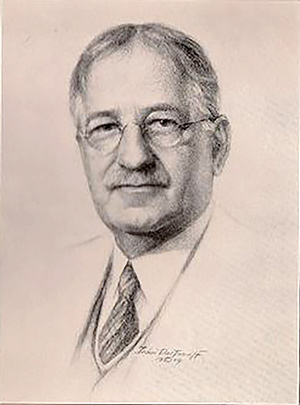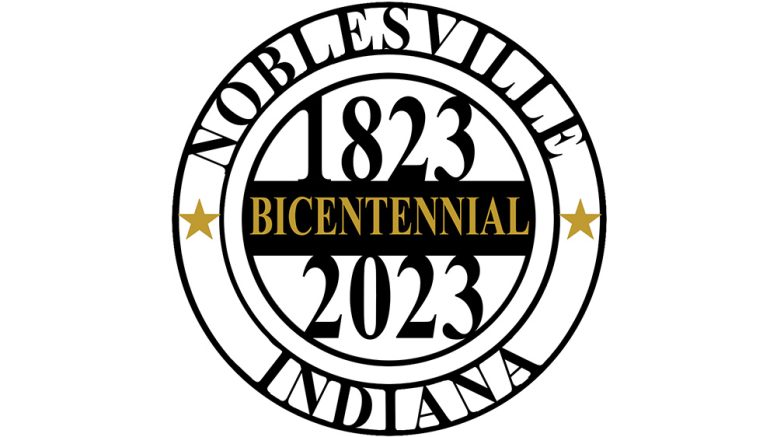Submitted by Noblesville Bicentennial Committee
Editor’s note: Information on monthly Trailblazers is written by Hamilton County Historian David Heighway. To read more about each Noblesville Trailblazers, visit cityofnoblesville.org/trailblazers.
As the City of Noblesville celebrates its 200th birthday, the Noblesville Bicentennial Committee has partnered with Hamilton County Historian David Heighway to share information about our community. Each month, we will highlight “Noblesville Trailblazers” – individuals and groups that made an impact to our history.
Salmon Oliver “Sol” Levinson (1865-1941)

Sol Levinson
Known as “Sol” when he lived here, Levinson was the eldest son of his family. He excelled in the local schools, graduating at the age of 16, and was a leading member of the local baseball team in the 1880s. He graduated from Yale in 1888, received his LLB from Lake Forest University in 1891, and was admitted to the Illinois Bar that same year where he practiced law in Chicago.
Sol continued his family’s involvement in charitable work in Noblesville. He began giving an annual award to the Ladies Aid Society in memory of his mother who had been an important member of the group. He and his brother Harry also contributed money in memory of their father to construct the Noblesville Masonic Lodge in 1915.
Sol’s most generous gift to the city was in 1917, when he gave $10,000 toward the construction of a new high school gymnasium which was most recently part of the Boys & Girls Club. For many years after this, the high school newspaper was called the “Levin Sun.” Another of his gifts still in use today is the Forest Park Golf Course, which he gave $1,000 for its construction in 1927.
Levinson was famous nationally for his work in the concept of outlawing war. He had written most of the text of the document known as the Kellogg-Briand Pact or Pact of Paris. For this, he was nominated for the Nobel Peace Prize in 1929 and received the Rosenberger Medal from the University of Chicago in 1931 and the French Legion of Honor in 1934.
Pete Smith
Pete Smith left no records himself and the information Hamilton County Historian David Heighway has found during his research is based on reminiscences written down 60 years or more after the fact. Nevertheless, Heighway says Smith’s story illustrates some important facts about the early settlement of the area and should be told if we are to understand how this community was created.
Smith was a Black man and was the first non-Native American to live in the Noblesville area. It was through his efforts that the first white settlers were able to survive.
In 1819, settlers came to the area to stake claim on land. Smith attracted attention as no one expected to see a Black man already in this area. He told them nothing about where he had come from or why he was there, but instead offered to help them. He became a trusted friend of the settlers and provided assistance in their times of need and helped prevent a possible confrontation with the Delaware Indians over a pair of missing shoes. When the settlement was ravaged by malaria during the summer, Smith helped families raise corn.
In 1820, Smith was working for William Conner, raising a field of corn and doing some trapping on his own. In all probability, Smith was helping the settlers and working for Conner because he planned to stay with the settlement and establish his own home and farm.
By 1821, land buyers were coming in from all over to speculate in these newly-available western lands. That year, a man came up from Kentucky to purchase land to resell. According to later accounts, he saw Smith, returned to Kentucky, and soon reappeared in this area with a group of men and papers saying that Pete Smith was an enslaved individual who had escaped from his farm. Smith denied that he knew the man and the settlers confronted the Kentuckian.
Conner, an influential man at that time, was asked by the settlers to intervene and free Smith. He examined the Kentuckian’s papers and then announced to the settlers that they were legally correct. Conner warned them that if the settlers attempted to stop the Kentuckian, they would be guilty of breaking the law. Without this support, they could do nothing. The Kentuckian then took Smith away and he was never heard from again. However, his story of significant local impact was passed down by others.
About the Noblesville Bicentennial Committee
The Noblesville Bicentennial Committee is planning the city’s Bicentennial Celebration in 2023, the 200th anniversary of Noblesville being platted. Bret Richardson and Megan Wiles serve as the honorary chairs to oversee the planning and programming of the celebration, while residents will help provide input and volunteer at the events. William Conner and Josiah Polk laid out what is now downtown Noblesville in 1823, which was designated as the Hamilton County seat in 1824 and incorporated in 1851. For more information, visit cityofnoblesville.org/bicentennial.

